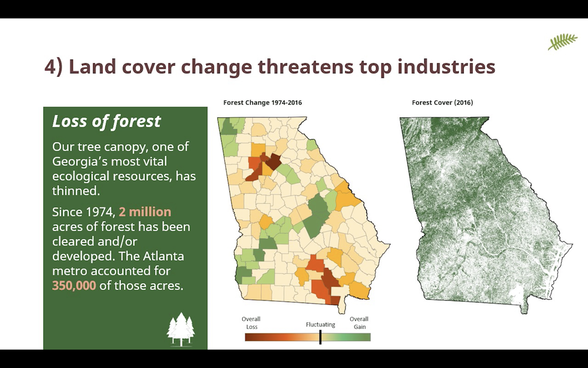Addressing the State's Coming Landscape Changes
Georgia Conservancy’s Katherine Moore Shares Perspectives onLand Use Change Research
Fall 2023
By John Casey

“We know that the quality of life and the functioning of all industries and the health of Georgia citizens rely on the ecological attributes of both natural and working forests.”— Katherine Moore, President, Georgia Conservancy
|
Georgia Forestry Magazine is published by HL Strategy, an integrated marketing and communications firm focused on our nation's biggest challenges and opportunities. Learn more at hlstrategy.com
|
